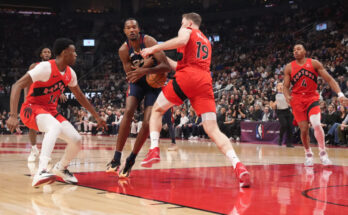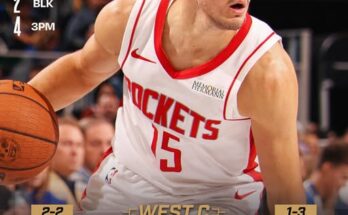The NBA of the 2020s is witnessing a profound transformation, a shift that extends beyond flashy highlight reels and superstar signings. Rick Carlisle, the veteran Indiana Pacers head coach, recently articulated a powerful observation about this new era: success in today’s NBA is increasingly determined by playing harder and smarter as a cohesive unit rather than relying solely on assembling top-heavy rosters brimming with superstars. This evolution reflects changes in the league’s culture, style of play, and the strategic approaches coaches and teams employ to achieve sustained success. Carlisle’s perspective opens a window into how the game is redefining itself, emphasizing grit, teamwork, and unselfish basketball over mere star power.
For decades, the NBA was often dominated by the notion that assembling one or two transcendent talents was the primary path to championships. The “superteam” concept flourished, epitomized by franchises stacking multiple All-Stars in an effort to overwhelm opponents with sheer talent. From the early 2000s Lakers with Kobe Bryant and Shaquille O’Neal, to the Miami Heat’s Big Three of LeBron James, Dwyane Wade, and Chris Bosh, to the Golden State Warriors’ supergroup of Stephen Curry, Klay Thompson, and Kevin Durant, the blueprint appeared clear: build around elite players and let their superior skills dictate the outcome.
However, while star power remains undeniably important, Carlisle’s insight highlights a critical shift that’s been gradually reshaping how teams build and win in the 2020s. The league has grown more competitive and more nuanced, where the gap between superstars and role players has narrowed thanks to advances in training, analytics, and strategic evolution. As a result, teams that emphasize hard-nosed defense, relentless effort, and cohesive ball movement often outpace more star-studded but less unified squads.
This change is partly a response to the defensive and physical intensity that has returned to prominence in the league. The NBA of the late 2010s and early 2020s has seen defenses tighten, with coaches designing schemes to disrupt superstar dominance through switching, double teams, and meticulous preparation. The increased use of analytics has helped teams identify the importance of contesting every shot, maximizing defensive rotations, and valuing every possession equally. In this environment, playing harder—communicating on defense, sprinting back on transitions, boxing out for rebounds—has become a decisive factor.
Moreover, the pace and style of play have also evolved. The league’s previous era was marked by a three-point shooting explosion led by teams like the Warriors, but this trend has matured. Teams now seek balance between perimeter shooting and physicality inside the paint, blending spacing with aggressive defense and rebounding. Coaches like Carlisle, who are renowned for their basketball IQ and adaptability, emphasize that effort and execution often trump raw talent alone. Teams that outwork their opponents by executing their game plan, diving for loose balls, and maintaining high energy levels tend to generate consistent success.
The Indiana Pacers exemplify this paradigm in the 2020s. They may not possess the same star wattage as franchises like the Lakers or Nets, but under Carlisle’s guidance, the Pacers have consistently competed through a collective mindset. Players embrace their roles, buy into a system, and focus on doing the little things that add up: setting solid screens, making the extra pass, playing physical defense. This approach fosters team chemistry and resiliency, qualities that can withstand the inevitable ups and downs of a grueling NBA season.
Additionally, this new era favors versatility and depth over a concentrated star hierarchy. With the increasing importance of three-and-D players—athletes who can shoot from distance and guard multiple positions—teams prioritize building rosters with complementary skill sets rather than just a few superstars surrounded by less versatile role players. This roster construction ensures that the team remains competitive even if a star struggles or faces injury. The collective effort of a deep, well-rounded team plays a critical role in enduring the rigors of the modern NBA.
The emphasis on hard work and teamwork is also a reflection of leadership trends within the league. Players like Giannis Antetokounmpo, Jimmy Butler, and Jayson Tatum, while undoubtedly gifted, are also known for their relentless work ethic and commitment to team success. These modern stars embody the principle that individual brilliance alone doesn’t guarantee wins; it must be coupled with a willingness to do the dirty work, inspire teammates, and lead by example. Carlisle’s coaching philosophy aligns with this mindset, focusing on discipline, accountability, and maximizing the collective potential.
Furthermore, the 2020s NBA is shaped by a more level playing field across franchises. The league’s salary cap structures, luxury tax penalties, and draft mechanisms have made it harder for any single team to hoard all the elite talent. This economic reality forces teams to be more creative and resourceful, often relying on player development, scouting, and culture-building to gain an edge. Playing harder as a team and fostering a winning culture often become the differentiators when the talent gap is minimized.
The impact of analytics cannot be understated in this shift either. Teams now have access to vast amounts of data that break down every aspect of the game—from player movement and shot selection to defensive positioning and energy expenditure. Coaches use this data to optimize lineups and strategies that maximize efficiency and effort. The idea of “playing harder” translates into making smarter plays, conserving energy where possible, and focusing on high-impact moments within games. This scientific approach complements the traditional values of hustle and grit, marrying them with modern basketball intelligence.
It’s also important to note how this shift affects player roles and mentality. In a top-heavy roster, superstars often demand the ball and spotlight, which can sometimes disrupt team flow and chemistry. In contrast, teams that emphasize hard work and balance encourage every player to contribute meaningfully, whether it’s through scoring, defense, or intangible effort. This approach builds trust and camaraderie, creating an environment where players are motivated to support one another, leading to more resilient and adaptable teams.
The NBA’s evolving landscape has already produced surprising playoff outcomes and underdog stories, where lesser-known teams with strong work ethics and balanced rosters upset star-studded opponents. These results reinforce the notion that the league rewards effort, execution, and unity more than ever. The narrative of the superstar carrying a team single-handedly is giving way to one of collective responsibility and shared success.
Looking ahead, Rick Carlisle’s observation suggests that future champions will likely be those who cultivate cultures of hard work and accountability. While elite talent remains crucial, the ability to integrate that talent into a well-oiled machine—where every player understands their role and executes it with passion and precision—will be the hallmark of greatness. The Pacers, under Carlisle’s leadership, demonstrate how embracing this philosophy can keep a franchise competitive and relevant, even in an era dominated by marquee names and media hype.
In conclusion, the NBA of the 2020s is redefining what it takes to win at the highest level. Rick Carlisle’s perspective underscores a vital truth: playing harder, smarter, and together has become more valuable than simply stacking a roster with top-tier stars. This new era celebrates grit, teamwork, and the grind—qualities that often fly under the radar but are essential for sustained success. As teams adapt to this reality, the league promises a more balanced, competitive, and compelling brand of basketball, where every possession counts and every player’s effort matters. The days of relying solely on superstar firepower to carry a team to glory are giving way to a holistic approach that honors the essence of basketball as a true team sport. Carlisle’s insight not only captures this shift but also offers a blueprint for teams striving to build winning cultures in the modern NBA landscape.



